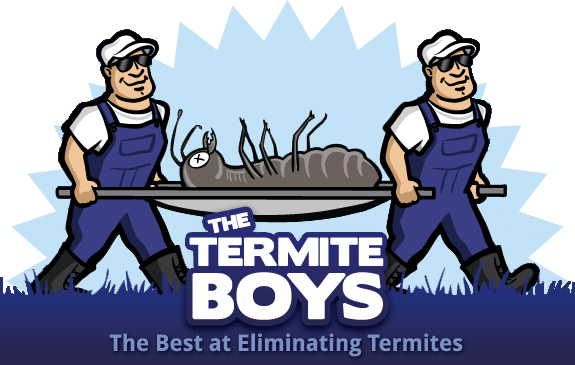Termites are among the most notorious pests in any city, and Boston is no exception. Known for their ability to quietly destroy wood and compromise the structural integrity of buildings, these tiny but mighty insects cause billions of dollars’ worth of property damage annually in the U.S. alone.
If you’re a homeowner or property manager in Boston, understanding termites and their presence in your area is crucial to protecting your home or building. This guide will explore the most common termite species in Boston, their characteristics, and how you can identify and manage them to keep your property safe.
Why Understanding Termite Species Is Important
While all termites might seem the same to most people, not all termite species behave in the same way. Some are more aggressive, while others are more likely to invade urban areas. Knowing which species you’re dealing with can help you implement the right treatment and preventive measures.
Boston’s climate plays a significant role in the types of termites found here. The city’s cold winters and warm, humid summers create an environment favorable to specific species, making it vital to stay informed about which termites you might encounter.
3 Common Termite Species Found in Boston
1. Subterranean Termites (Reticulitermes spp.)
Subterranean termites are the most common type found in Boston and across the U.S. They live in colonies underground and build mud tubes to access wood structures for food. Because of their massive colony sizes and ability to go undetected for long periods, subterranean termites are among the most destructive termite species.
Characteristics
- Colony size: Can include thousands to millions of termites.
- Habitat: Prefer moist environments, typically living underground or in damp wood.
- Appearance: Workers are cream-colored and about 1/8 inch long. Soldiers have large, darker heads and mandibles (jaws).
- Damage pattern: Subterranean termites create honeycomb-like patterns inside wood and work from the inside out, leaving the surfaces intact until significant internal damage has occurred.
Signs of Infestation
- Mud tubes on walls, foundations, and wooden beams.
- Hollow-sounding wood or sagging floors.
- Swarmers (winged termites) indoors or dead wings near windows and doors, often in the spring.
2. Drywood Termites (Cryptotermes spp.)
Although less common in Boston than subterranean termites, drywood termites can still be found under the right conditions—in particular, within furniture and dried wood not in contact with soil. Unlike their subterranean counterparts, drywood termites don’t require moisture from the ground, making them capable of infesting drier environments.
Characteristics
- Colony size: Smaller than subterranean termite colonies, usually a few thousand termites.
- Habitat: Found in dry wood furniture, framing, or other wooden structures above ground.
- Appearance: Soldiers have large mandibles, while swarming termites are 1/2 inch long with wings.
- Damage pattern: Drywood termites create a unique damage pattern, leaving behind piles of frass (termite droppings) that resemble small, sand-like pellets.
Signs of Infestation
- Piles of frass near wooden furniture or structures.
- Small holes in wood where termites have entered or exited.
- Clicking noises inside walls (produced by termites as they chew through wood).
3. Dampwood Termites (Zootermopsis spp.)
True to their name, dampwood termites thrive in moist environments and are drawn to damp or decaying wood. While less frequently encountered in urban Boston homes, areas prone to moisture (such as basements or crawl spaces with leaks) are at higher risk.
Characteristics
- Colony size: Typically smaller than subterranean termites but still capable of causing significant damage over time.
- Habitat: Damp or decayed wood, often found in poorly ventilated areas.
- Appearance: Larger than most other termite species, ranging from 1/2 to 5/8 inch in length.
- Damage pattern: Dampwood termites leave behind smooth tunnels and large cavities where they feed.
Signs of Infestation
- Wood that appears damp, spongy, or has mold growth.
- Visible termite activity or swarms after periods of heavy rain.
- Soft wood that easily crumbles when touched.
How to Identify and Manage Termite Infestations
Identifying termites can be difficult since they often remain hidden until substantial damage is done. However, understanding their signs, habits, and appearance can make spotting them easier.
Step 1: Look for the Signs
Keep an eye out for:
- Mud tubes on exterior surfaces.
- Swarming termites or discarded wings.
- Piles of frass (for drywood termites).
Step 2: Conduct a Wood Inspection
Tap on wood structures in your home and listen for hollow sounds. Carefully inspect wooden beams, floors, and furniture for small holes, cracks, or warping.
Step 3: Control and Prevention
If you detect an infestation or suspect termites, take immediate action:
- Call a professional pest control service to assess the severity and type of infestation. Termites often require professional eradication methods.
- Reduce moisture levels by fixing leaks, ensuring proper drainage, and using dehumidifiers in damp spaces.
- Create barriers by sealing cracks in your home’s foundation and using termite-resistant materials for construction and repairs.
- Perform regular inspections to catch infestations early, especially during peak termite activity seasons (spring and summer).
Protecting Your Boston Home from Termites
Understanding the common termite species in Boston is an essential step in protecting your property from termite damage. Subterranean, drywood, and dampwood termites each pose unique challenges, but vigilance and prevention can save you from extensive repairs and costly damages.
If you suspect termites in your home, don’t wait to act. A professional pest control service can help determine the best course of action to manage your termite problem effectively.
Building a Termite-Free Future
Termites may be pests, but knowledge is your best weapon against them. By educating yourself on their habits, identifying early warning signs, and implementing proactive control measures, you can keep your Boston home safe from these silent destroyers.

